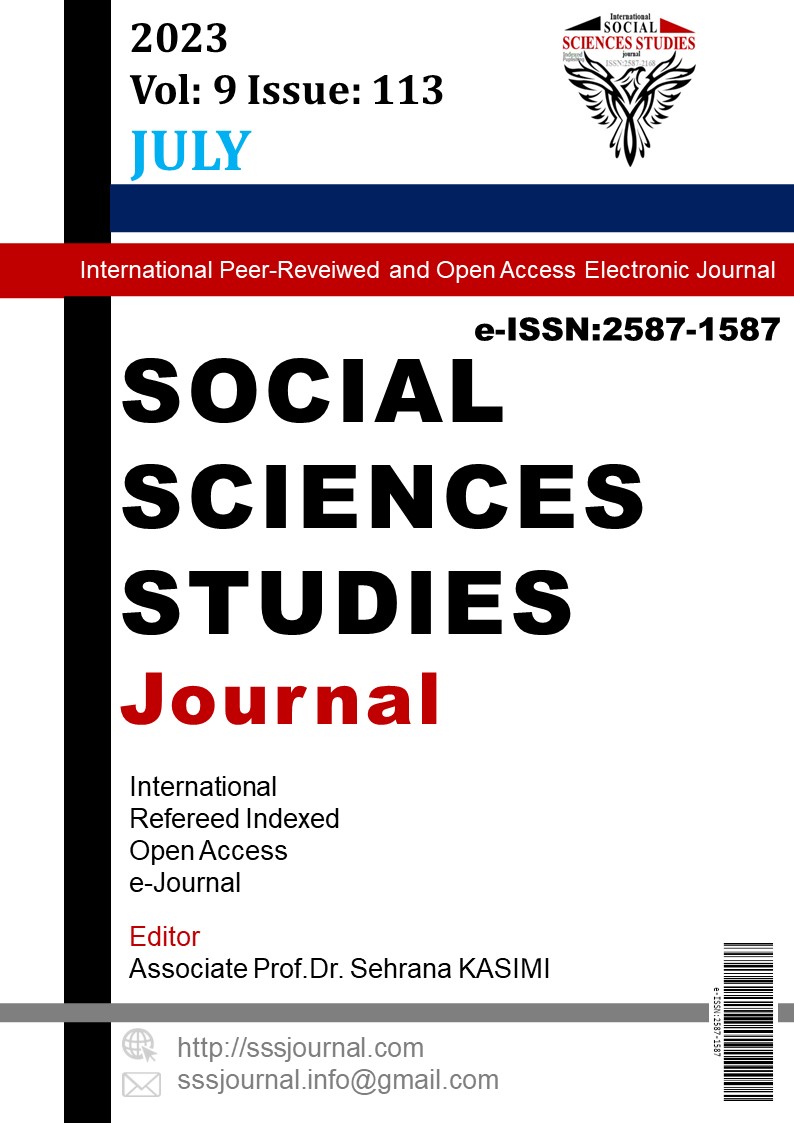Author :
Abstract
Ortaöğretim öğretmenlerinin öğrenci kavramlarına ilişkin zihinsel imgelerini metafor yoluyla belirlemeyi amaçlayan bu çalışma tarama modelinde fenomonolojik bir araştırma olarak gerçekleştirilmiştir. Araştırmanın çalışma grubunu 2022-2023 yılında Diyarbakır/Bağlar ilçesinde çalışmakta olan ve ankete cevap veren 142 ortaöğretim öğretmeni oluşturmaktadır. Kolay ulaşılabilir örneklem yöntemiyle belirlenerek cevap veren tüm katılımcılar araştırmaya dahil edilmiştir. Araştırmada, çok sayıda katılımcıya ulaşmak için Google form yardımıyla iki bölümden oluşan çevrimiçi form kullanılmıştır. İlk bölümde katılımcıların demografik niteliklerine ilişkin sorular, ikinci bölümde ise genellikle metafor kullanımlarını belirlemek amacıyla kullanılan “Öğrenci … gibidir. Çünkü …” şeklinde boşluk doldurma formu oluşturulmuştur. Google form aracılığıyla toplanan verilerin analizinde içerik analizi yöntemi kullanılmış ve veriler gruplandırılarak değerlendirilmiştir. Araştırma bulugularına göre, ortaöğretim öğretmenlerinin öğrenci kavramına yönelik kullandıkları metaforların belirlenmesine yönelik gerçekleştirilen araştırma bulgularından hareketle katılımcı ortaöğretim öğretmenlerinin en çok “hamur, çiçek, ağaç, ayna” metaforunu kullandığı; yanıtlar kategorize edildiğinde “araç gereç/eşya, bitki ve bitki türleri, doğa ve doğa olayları, insan ve insanlık, soyut kavramlar, maden ve maden türleri” şeklinde gruplandığı; “çünkü ….” sorusu sonucu oluşan metaforlar türlerinin nedenlerinin “şekil alma, ilgi ve bakım isteme, destek ihtiyacı duyma, yansıtmacı olma” şeklinde oluştuğu ve cinsiyet, yaş ve branş faktörüne göre öğretmenlerin oluşturdukları metaforlarla ilgili istatistiksel düzeyde anlamlı farklılaşma olmadığı sonucuna ulaşılmıştır. Öğretmenlerin objektif davranması ve daha gerçekçi metaforlar geliştirmesi, bu konu öğretmen yetiştirme programlarının veya hizmet içi eğitim sürecinin içeriğine eklenmesi ve daha sonra yapılacak araştırmalarda diğer yöntemlerle birlikte demografik değişkenlerin de göz önünde bulundurulması gibi önerilerde bulunulmuştur.
Keywords
Abstract
This study, which aims to determine secondary school teachers' mental images of student concepts through metaphor, was carried out as phenomenological research in the screening model. The study group of the research consists of 142 secondary school teachers working in Diyarbakır/Bağlar district in 2022-2023 and responding to the questionnaire. All participants who responded by being determined by the easily accessible sampling method were included in the study. In the research, an online form consisting of two parts was used with the help of Google form to reach a large number of participants. In the first part, questions about the demographic characteristics of the participants, and in the second part, “Student is like …”, which is generally used to determine the use of metaphors. Because…” A fill-in-the-blank form was created. Content analysis method was used in the analysis of the data collected through the Google form and the data were grouped and evaluated. According to the research findings, based on the findings of the research carried out to determine the metaphors used by secondary school teachers for the concept of student, it was found that the participating secondary school teachers mostly used the metaphor of “dough, flower, tree, mirror”; When the answers are categorized, they are grouped as “tools/goods, plant and plant species, nature and natural events, human and humanity, abstract concepts, mineral and mineral types”; “Because ….” It was concluded that the reasons for the types of metaphors formed as a result of the question were “taking shape, asking for attention and care, needing support, being reflective” and that there was no statistically significant difference in the metaphors created by teachers according to gender, age and branch factor. Suggestions were made for teachers to act objectively and to develop more realistic metaphors, to add this subject to the content of teacher training programs or in-service training process, and to consider demographic variables together with other methods in future research.
